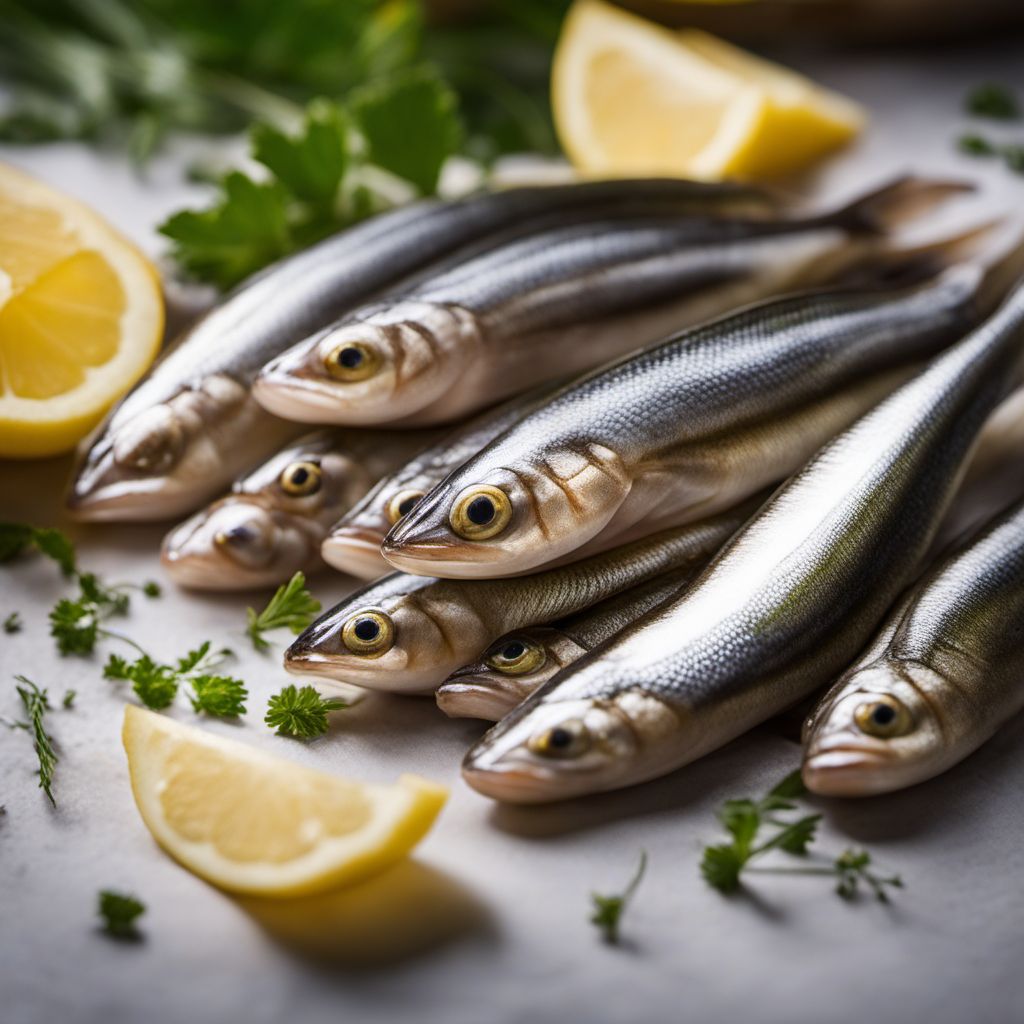
Ingredient
Smelt, european
The Delicate Delight: European Smelt
European smelt is a small, slender fish with a silvery-blue color and a delicate texture. It has a mild, slightly sweet flavor that is often compared to that of sardines or herring. The flesh is tender and flaky, making it perfect for frying, grilling, or even pickling. Its small size also makes it a popular choice for appetizers or as a garnish.
Origins and history
European smelt is native to the coastal waters of the northeastern Atlantic Ocean and the Baltic Sea. It has a long history of being harvested and consumed in Europe, particularly in countries like France, Germany, and the Netherlands. Smelt fishing has been a traditional activity in these regions for centuries, with various fishing festivals and events celebrating the abundance of this fish. In recent years, European smelt has gained popularity in North America as well, where it is often caught in the Great Lakes region.
Nutritional information
European smelt is a good source of protein and omega-3 fatty acids. It is also low in calories and contains essential vitamins and minerals such as vitamin B12, selenium, and phosphorus.
Allergens
Fish (smelt)
How to select
When selecting European smelt, look for fish that have clear, bright eyes, shiny skin, and a fresh, clean smell. The flesh should be firm and resilient to the touch. Avoid fish that have dull or cloudy eyes, discolored skin, or a strong fishy odor, as these are signs of poor quality or spoilage.
Storage recommendations
To maintain the freshness and quality of European smelt, it is best to store it in a refrigerator set at a temperature between 32°F and 38°F (0°C and 3°C). Keep the fish wrapped in moisture-proof paper or plastic wrap to prevent it from drying out. It is recommended to consume European smelt within 1-2 days of purchase for optimal flavor and texture.
How to produce
European smelt can be commercially fished or caught recreationally using nets or fishing lines. However, it is not commonly cultivated or farmed, so the best way to obtain fresh European smelt is to purchase it from a reputable fishmonger or seafood market.
Preparation tips
European smelt can be prepared in various ways, including frying, grilling, baking, or even pickling. To fry smelt, coat them in a light batter or breading and cook them in hot oil until they turn golden brown and crispy. Grilling or baking smelt with some herbs and spices can enhance their natural flavors. Smelt can also be marinated or pickled to add a tangy twist to their delicate taste. They are often served as an appetizer, in salads, or as a topping for sushi or rice bowls.
Culinary uses
European smelt is commonly used in European cuisines, particularly in countries like France, Germany, and the Netherlands. It is often served as a fried or grilled appetizer, added to salads, or used as a topping for sushi or rice bowls. Smelt is also a popular ingredient in traditional fish stews and soups, adding a delicate flavor to the broth. In North America, European smelt is commonly enjoyed during smelt fishing festivals or as a seasonal delicacy in coastal regions.
Availability
European smelt is commonly available in Europe, particularly in countries like France, Germany, and the Netherlands. It is also found in North America, specifically in the Great Lakes region where it is often caught during the smelt fishing season.
